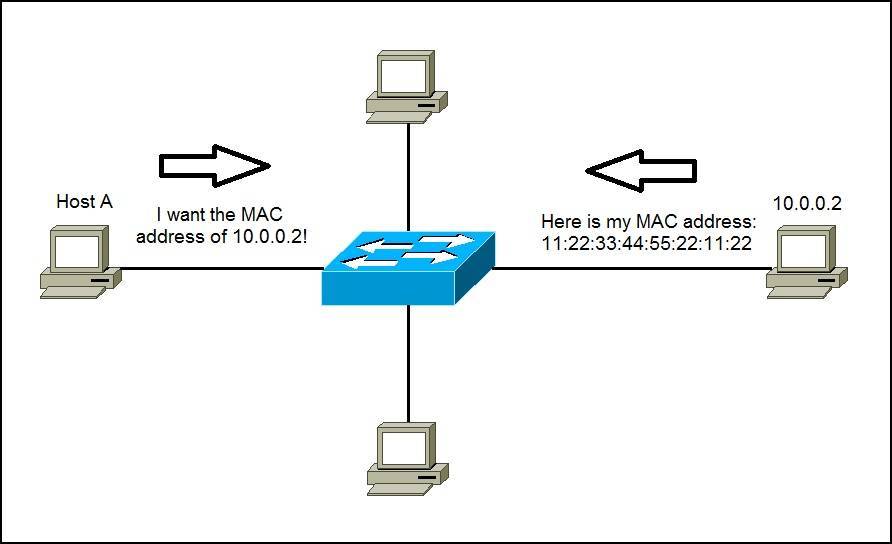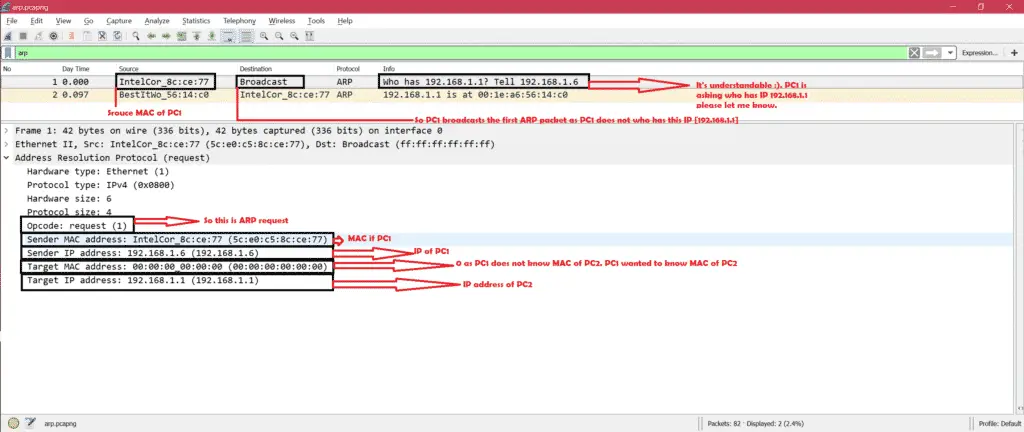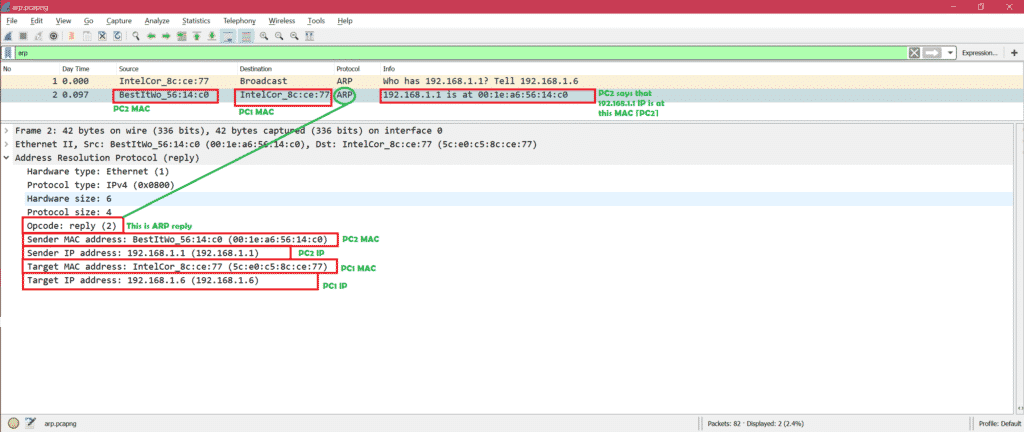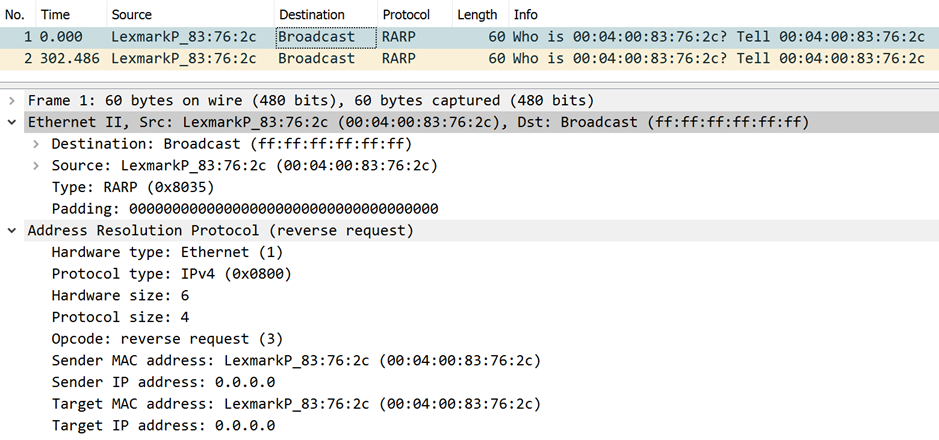- How ARP works
When a new computer joins a LAN, it is assigned a unique IP address to use for identification and communication
When an incoming packet destined for a host machine on a particular LAN arrives at a gateway, the gateway asks the ARP program to find a MAC address that matches the IP address
A table called the ARP cache maintains a record of each IP address and its corresponding MAC address.
All operating systems in an IPv4 Ethernet network keep an ARP cache.
Every time a host requests a MAC address in order to send a packet to another host in the LAN, it checks its ARP cache to see if the IP to MAC address translation already exists.
If the translation does not already exist, then the request for network addresses is sent and ARP is performed.
ARP broadcasts a request packet to all the machines on the LAN and asks if any of the machines know they are using that particular IP address. When a machine recognizes the IP address as its own, it sends a reply so ARP can update the cache for future reference and proceed with the communication.
Host machines that don't know their own IP address can use the Reverse ARP (RARP) protocol for discovery.
When an ARP inquiry packet is broadcast, the routing table is examined to find which device on the LAN can reach the destination fastest. This device, which is often a router, becomes a gateway for forwarding packets outside the network to their intended destinations.
ARP spoofing and ARP cache poisoning
Any LAN that uses ARP must be wary of ARP spoofing, also referred to as ARP poison routing or ARP cache poisoning.
ARP spoofing is a device attack in which a hacker broadcasts false ARP messages over a LAN in order to link an attacker's MAC address with the IP address of a legitimate computer or server within the network. Once a link has been established, the target computer can send frames meant for the original destination to the hacker's computer first as well as any data meant for the legitimate IP address.
https://searchnetworking.techtarget.com/definition/Address-Resolution-Protocol-ARP
ARP Request
ARP Reply
- RARP: Its opposite of normal ARP that we have discussed. That means you have MAC address of PC2 but you do not have IP address of PC2. Some specific cases need RARP.
https://linuxhint.com/arp_packet_analysis_wireshark/
- The Reverse Address Resolution Protocol (RARP) is an obsolete computer communication protocol used by a client computer to request its Internet Protocol (IPv4) address from a computer network, when all it has available is its link layer or hardware address, such as a MAC address. The client broadcasts the request and does not need prior knowledge of the network topology or the identities of servers capable of fulfilling its request.
https://en.wikipedia.org/wiki/Reverse_Address_Resolution_Protocol
- Configuring Gratuitous ARP
- Gratuitous ARP







No comments:
Post a Comment